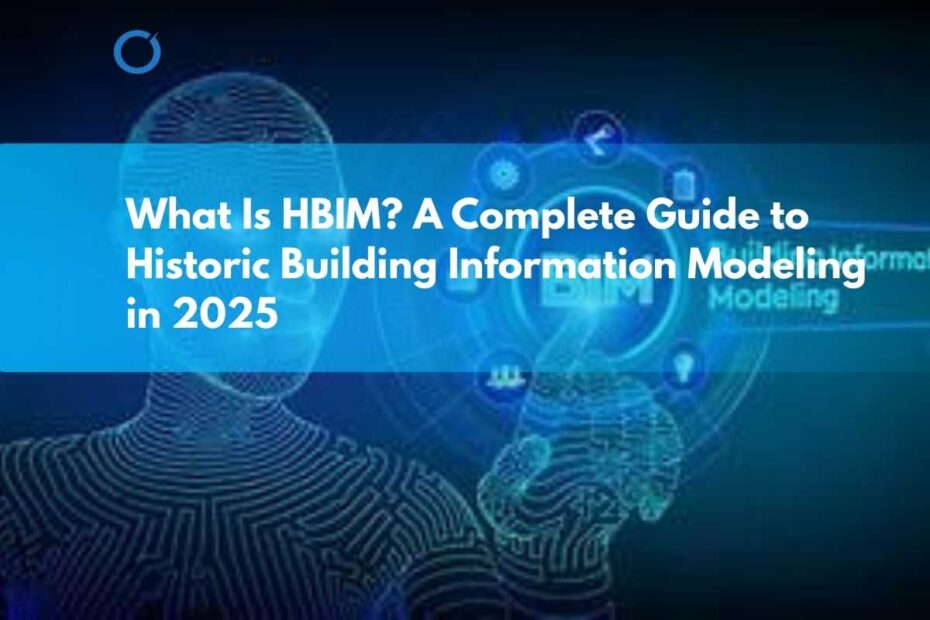Historic Building Information Modeling (HBIM) transforms the way we preserve and restore heritage buildings in 2025, blending cutting-edge technology with historical accuracy. As the demand for conserving listed buildings grows in the UK, HBIM offers a digital solution to document, analyze, and manage historic structures efficiently. This guide explores HBIM, its workflow, benefits, and applications for heritage buildings, equipping you with insights to leverage this innovative approach for conservation projects.
Understanding Historic Building Information Modeling (HBIM)
What Is HBIM?
Historic Building Information Modeling is a specialized subset of BIM tailored for heritage buildings. Unlike traditional BIM, which focuses on modern construction, HBIM integrates advanced technologies like laser scanning and photogrammetry to create detailed 3D models of historic structures. In the UK, where preserving listed buildings is a priority, HBIM for heritage buildings ensures accurate documentation and informed restoration decisions.
HBIM vs BIM: Key Differences
HBIM differs from standard BIM by addressing the unique challenges of historic structures. While BIM focuses on new builds, HBIM for conservation emphasizes capturing irregular geometries, material textures, and historical data. For instance, Scan to BIM Modeling Services UK use point cloud data to recreate intricate details of heritage sites, ensuring precision that standard BIM may not require.
- BIM: Focuses on new construction with standardized components.
- HBIM: Prioritizes historical accuracy, irregular shapes, and conservation needs.
- Technology: Historic Building Information Modeling relies heavily on HBIM photogrammetry and laser scanning for data capture.
The HBIM Workflow in 2025
Step 1: Data Capture with Scan to HBIM
The HBIM process starts with data capture using advanced tech. Scan to BIM Services UK then convert laser-scanned point clouds into detailed 3D models that retain historic features.
Step 2: 3D Modeling with HBIM Revit Modeling
Once data is collected, HBIM Revit modeling transforms point clouds into intelligent 3D models. These models include metadata about materials, historical significance, and structural conditions.
Step 3: Analysis and Clash Detection
HBIM in construction involves analyzing models for structural integrity and potential conflicts. Our BIM Clash Detection Services UK identify issues like incompatible retrofits or restoration clashes, ensuring seamless project execution. This step is critical for listed buildings, where alterations must comply with strict UK heritage regulations.
Step 4: Documentation and Collaboration
Heritage BIM documentation centralizes all project data, from historical records to restoration plans. By outsourcing tasks through Building information modeling Outsourcing Services UK, teams in the UK and India collaborate efficiently, reducing costs while maintaining quality. This documentation supports stakeholders, from architects to conservationists, in making informed decisions.
Benefits of HBIM for Heritage Buildings in the UK
Preserving Historical Integrity
HBIM for listed buildings ensures that every restoration respects the original design. A 2025 London project used HBIM photogrammetry to replicate Victorian moldings and preserve heritage.
Ask ChatGPT
Cost and Time Efficiency
By integrating 4D and 5D BIM Services UK, HBIM streamlines project timelines and budgets. 4D adds time scheduling, while 5D incorporates cost estimation, helping UK conservation projects stay on track. This efficiency is vital for heritage sites with limited funding.
Enhanced Collaboration
HBIM fosters collaboration among architects, engineers, and historians. Our MEP BIM Modeling Services UK ensure that modern mechanical, electrical, and plumbing systems integrate seamlessly with historic structures, balancing functionality with preservation.
Applications of HBIM in the UK
Conservation of Listed Buildings
In the UK, HBIM UK is widely used for Grade I and II listed buildings. For instance, restoring a 17th-century manor house in Yorkshire involved CAD to BIM Conversion Services UK to digitize old blueprints, enabling precise restoration planning.
Retrofitting and Modernization
HBIM for conservation supports retrofitting heritage buildings with modern systems. By using Architectural BIM Modeling Services UK and Structural BIM Modeling Services UK, teams ensure that new additions, like energy-efficient HVAC systems, align with historical aesthetics.
Virtual Tours and Public Engagement
HBIM models enable virtual tours of heritage sites, enhancing public access to restricted areas. In 2025, HBIM for heritage buildings is increasingly used to create immersive experiences for educational and tourism purposes.
Why Choose Us for HBIM Services in 2025?
As a trusted provider of BIM Outsourcing Services UK, we specialize in delivering tailored HBIM solutions across the UK and India. Our expertise in Scan to BIM Modeling Services UK, HBIM Revit modeling, and BIM Clash Detection Services UK ensures that your heritage project meets regulatory standards while preserving historical value.
Whether you need Architectural BIM Modeling Services UK or 4D and 5D BIM Services UK, our team delivers precision, efficiency, and innovation.
Conclusion
In 2025, Historic Building Information Modeling (HBIM) is revolutionizing heritage conservation in the UK. By combining advanced technologies like point cloud to HBIM with expert services, HBIM ensures that listed buildings are preserved for future generations. Ready to restore a historic structure?
Contact us today for professional HBIM UK services and bring your heritage project to life with precision and care.
